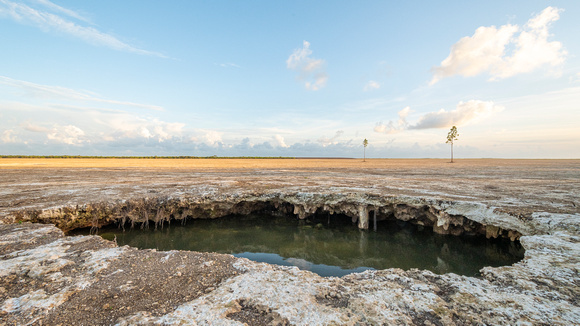Holy Hole in the Donut
Until 1975, 6,600 acres of land between
Paradise Key and Long Pine Key in
Everglades National Park was farmed.
When this practice ceased, the land
was open to invasion by Brazilian
Pepper, an invasive treelet originally
brought to Florida as an ornamental.
This invader quickly colonized the
entire area and served as a source of
seed for the takeover of nearby areas.
From 1997 to 2020, the Park Service
has been removing the plants and the
soil down to the limestone bedrock
with bulldozers, front end loaders, and
road graders. The last area of almost
1000 acres (pictured above) was
recently completed in Spring 2020.
It is common for organic acids from
leaf decomposition to slowly dissolve
the soft limestone bedrock from the
top down to form solution holes. This
solution hole is one of the largest ever
found in the Park and is notable for its
stalactites that hang from the ceiling
of the overhanging roof of the hole.
This photograph was made after a
record 12" rainfall over three days. It
will be interesting to watch the rate of
recolonization of the scraped zone and
the reestablishment of the original
marl (limestone clay) prairie.


